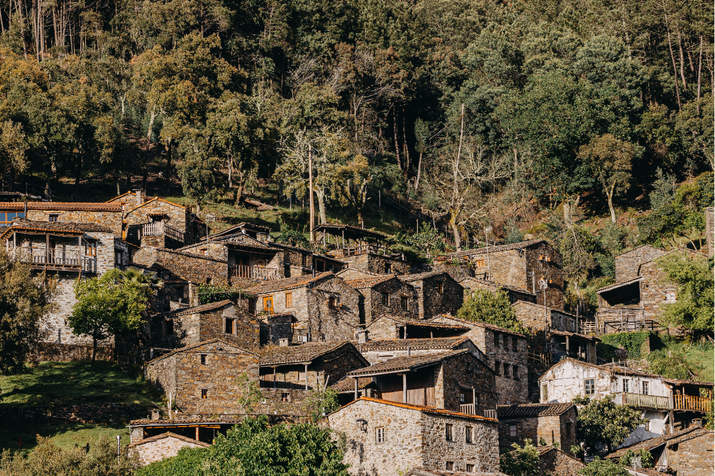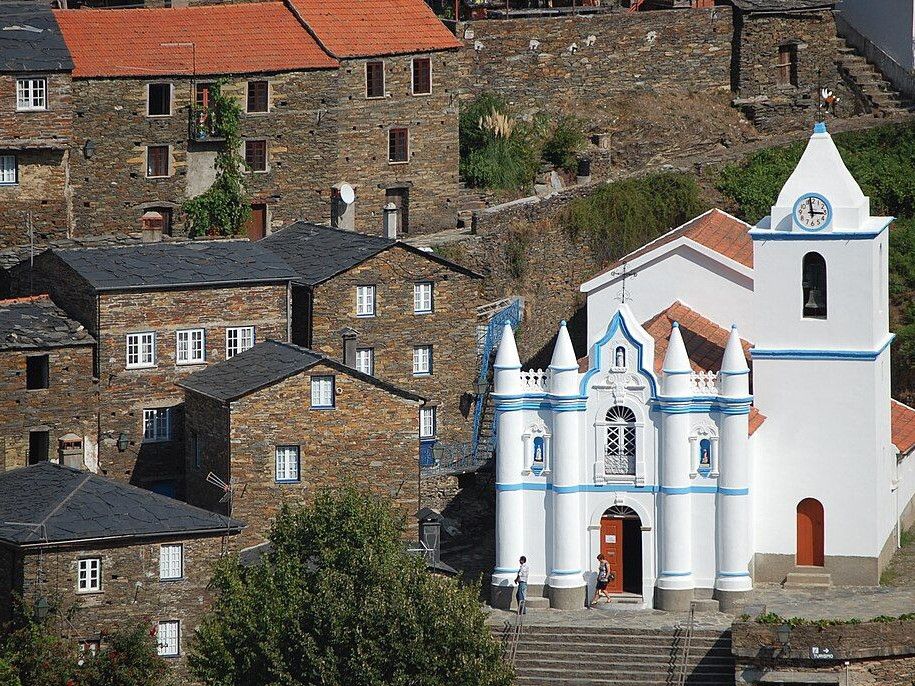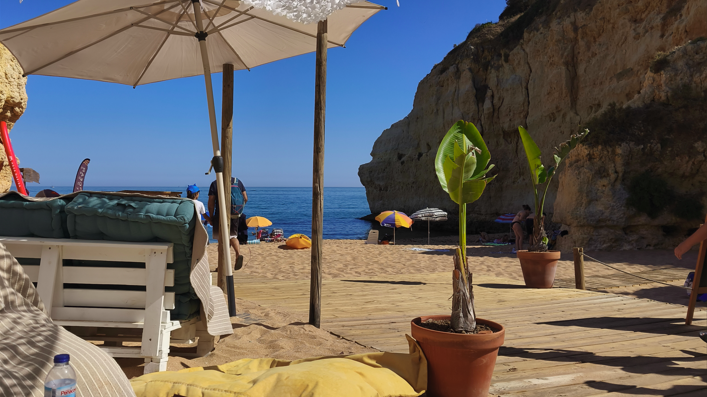This idea came to me as I pondered what to write about today. I'm writing this as I sit, supping ice-cold beer at one of my favourite cafes in Vilamoura. Everywhere I’m looking at right now is filled to the brim with modernity and the general hustle and bustle of a busy Algarvian resort. But I love it and it's exactly why I enjoy coming here so much.
Nonetheless, I'd like to touch on places where I might once again be woken up by one of those pesky loud-mouthed (loud-beaked) Portuguese roosters; only to then lay awake as the early morning glow slowly lights up my bedroom window. Distant barking dogs are just as keen to greet the new day as I am in these majestic rural beauty spots.
Let’s not look any further than Portugal’s schist villages. They're just waiting to be discovered by all manner of travelers. These picturesque villages, hidden away in the Serra da Lousã mountain range in central Portugal, are a fair distance from my current Algarvian haunts, but they invariably offer tantalising glimpses into this amazing country’s often perplexing history and the traditional way of life they still afford.
Much as I love both Vilamoura, Quarteira and indeed all of the Algarve, I thought I'd like to look at somewhere altogether more tranquil in today's piece.
Schist or bust
So, off we go to visit some really ancient settlements built almost entirely of said ‘schist’ which, I'm reliably informed, is a type of metamorphic rock. I'm no geologist but that sounds impressive, right. Anyway, these unique Portuguese villages are brimming with rustic charm and character, making them a must-visit destination for anyone who truly enjoys exploring this lovely country. For Algarve stalwarts like me, it's a kind of ‘out-of-beach’ experience - but in a good way.
The schist villages are locally known as “Aldeias do Xisto.” They're a number of small, historic (albeit once abandoned) villages dotted around the Serra de Lousã region. These days, however, some of them have been painstakingly restored to showcase their value as a means to glimpse the region’s past. Today, they continue to encapsulate the area's traditional architecture, bringing to life ancient traditions and culture.
Many of these villages were abandoned by their inhabitants in the 20th century, as people moved away to live in large towns and cities in search of greater opportunities. As a result, many of the villages continue to have many derelict buildings. However, in recent years, there has been renewed interest in preserving and reviving these villages, with many now thriving once again as niche eco-tourist destinations.
Some of the most popular schist villages of Portugal:
Talasnal: Located in the heart of the Serra da Lousã region, Talasnal is a particularly peaceful village surrounded by lush forests. Today, the village is home to just a handful of residents who continue to live off the land, maintaining the village’s traditional way of life. Visitors can explore the village’s narrow streets, drop into some artisan craft shops and finish the day by enjoying a delicious meal at one of the local Tascas. It really is a truly immersive experience that comes highly recommended.
Piodão: To say this place is stunning is an understatement. Known as the “nativity village” due to its unique layout, Piodão is one of the most picturesque villages in the Serra da Lousã. The village is characterised by narrow, winding streets, traditional houses featuring blue doors and windows. Piodão is a popular spot for photographers with its picture-perfect mountain backdrop, terraced homesteads and typical dark stone architecture serving as excellent photo opportunities for enthusiastic visitors.
Cerdeira: Clinging on to lush hillsides, this is a village renowned for its artisan workshops and craft studios. These days, it's a vibrant village that’s become home to a community of artists. Visitors can take part in workshops, learn traditional crafts and purchase handmade souvenirs. The village also offers comfortable accommodation in a setting that suits those looking to spend time in a peaceful and scenic location.
Candal: This village sits around a deep and lush valley. It’s a tranquil village that offers a genuine respite from the hustle and bustle of everyday living. These days, it is home to a handful of residents who maintain the traditional way of life by working the land and tending to their gardens, livestock and orchards. Visitors can explore the village on foot, enjoy a picnic by the river or simply relax and take in the breathtaking mountain views.

Getting there
Accessibility to these unique schist villages can vary depending on their location, but most villages are accessible by car or public transport.
The easiest way to explore the villages is by renting a car and driving through the scenic countryside. It’s worth checking out what the public transport options are but, from past experience, I know that buses do regularly run from nearby towns and cities. By "regular," I mean that in the loosest possible rural context.
Living history
The history of Portugal’s schist villages dates back many centuries. They were originally founded as farming communities in the Middle Ages. Built using locally sourced materials, including said-schist. Slate and granite were also used to create robust structures which continue to stand as a testament to the resilience of our ancestors. The building materials remain abundant in the region, meaning that restoration has been done sympathetically whilst keeping traditional skills alive. The houses were typically constructed with thick stone walls with small windows protecting occupants from the harsh mountain climate. Many were topped by thatched roofs, also crafted using locally sourced materials.
Over the years, the villages evolved into self-sustaining communities, with residents growing their own food by cultivating the often harsh ground and raising livestock. They also produced traditional handicrafts such as pottery, weaving and woodwork. However, as industrialisation and urbanisation became the norm during the 20th century, many of the villages were abandoned.
Preservation
As mentioned earlier in this article, there has recently been renewed interest in preserving and reviving the schist villages of Portugal. Local government and community organisations have collaborated to carefully and sympathetically restore the old buildings, helping to promote sustainable tourism and breathe new life into these once vibrant settlements. It's a good news story, for once.
Today, the villages offer a unique glimpse into Portugal’s past, with traditional architecture and cultural traditions being kept well and truly alive amongst some of the country’s most magical natural landscapes.
A wonderful experience
Visiting the schist villages is a truly wonderful experience, allowing visitors to step back in time and explore a way of life that has somehow survived against the odds.
Whether you’re interested in history, culture, outdoor activities or simply wish to lap up the peace and tranquility of the area’s glorious countryside, the schist villages of Portugal are a must-visit for anyone looking to experience the more quirky side of this fascinating country.
I find the beauty and charm of this unique region utterly captivating, serving perhaps as a reminder of a more civilised and relaxed way of living. And, I'm all for that.










